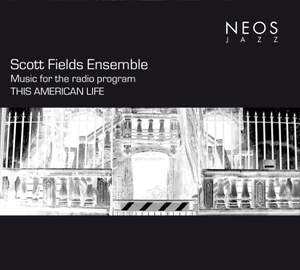Driving back to Chicago for Christmas a decade or so ago, maybe less, David Sedaris, reading his story about taking French class in France, brought me to tears. Listening to David Sedaris read one of his stories is always better than reading one of his stories and if you do read one of his stories it’s best to imagine his voice reading the story. This particular story, in which Sedaris and his classmates in broken French and their teacher in pissed-off French compare assorted ludicrous holiday fables, was the final segment in that week’s This American Life, the radio program from Chicago’s WBEZ.
This particular story didn’t include background music. It was a live recording of one of Sedaris’ public readings and the show’s producers, or probably the top dog, Ira Glass, Philip Glass’s nephew, left those alone. But there was music under Ira Glass’s voice as he introduced the week’s theme and as he talked before each segment on that week’s theme and during most of the segments themselves. Whoever selects the sundry fragments of music for This American Life, let’s assume Ira Glass, it’s been said he has his fingers in everything, has a knack for material that is immediately engaging yet transparent enough to ignore when the talking starts.
Some friends of mine who have written music for This American Life have been disturbed by the show’s Cuisinart aesthetic. Doesn’t bother me though. Leonard Bernstein may have had a hissyfit when his precious, dreadful score for On the Waterfront was cut so that Brando could be heard muttering “yea.” Not me. This American Life has its thing and it can be my thing. Here’s the music; butcher it however you like.
The music on this recording is fresh even though for two years and running now the shows themselves have been scraps that the carpetbagger Ira Glass, who now expends his real energy striving for TV stardom, cobbles together from previously aired programs. In a transparent attempt to present old as new, each week he now provides new narration and music to bind scavenged segments.
That’s where this recording comes in. Each of the five pieces is written for a This American Life theme. Strange people live next door, for example, is in three acts. In act one a teenage girl keeps online diary that she fills with her speculations about other families in the neighborhood. In act two the neighbors are two countries whose residents have for centuries regarded each other with suspicion and distain. And in act three David Sedaris and his boyfriend Hugh become the strange neighbors when they move into their new condominium in Paris.
Dogs we thought we knew includes episodes about real dogs who turn on their masters, men whose are dogs, womanwise, aching feet (my dogs are killing me), and what happens when white teenagers appropriate black expressions. Yo, dawg.
These five pieces provide all of the music an hour-long This American Life show needs, with plenty of leftovers for hash and sandwiches. Each includes repeating motifs that carry through an entire show, variations in texture to match the moods of different segments, melodies for linking segments, subtle grooves that are substrates for narration, musical cues for drama, pathos, comedy, and pain. Although the fate of this music is almost certainly to be sliced, diced, mixed, and fried, it can, and was intended to, stand on its own, intact.
Scott Fields, Cologne, February 2008





